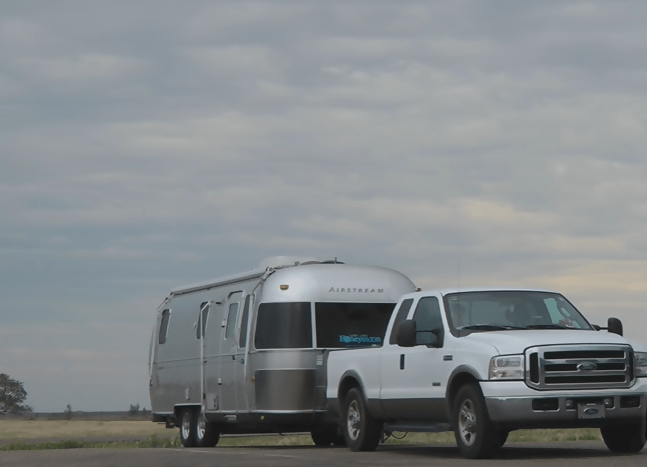Propane Tank Leaking After Refill: 7 Safety Steps
You have a major problem on your hands if your RV’s propane tank leaking after refill. Propane leaks are obviously quite harmful and lead to high-risk factors.
Leaks in propane tanks typically result from one of three causes: a loose or open bleeder valve, a malfunctioning relief valve, or a damaged tank itself. This article covers all these causes in detail with a fix. Additionally, we will also discuss 7 safety steps to use a propane tank safely. Let’s dive into the details!
Table of Contents
Is A leaking Propane Tank Dangerous?
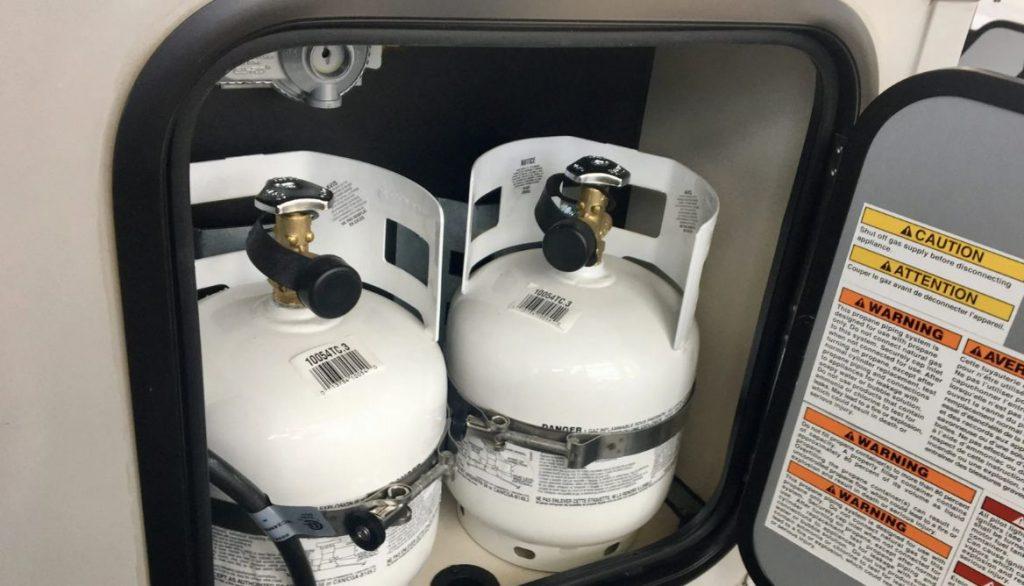
A leaking propane tank is exceedingly hazardous. Since propane can be easily ignited, it is commonly employed in the culinary and heating industries. If propane leaks from a broken tank and blows through a heated place like a stove or fireplace, it might cause a terrible explosion.
The escaping gas will be ignited, and the resulting flame may either smoulder or spread back into the tank, which might cause an explosion. Propane is extremely harmful to breathe in if it is present in a confined area.
Propane is not harmful in and of itself, but it may deplete the air of oxygen and hence be dangerous. As it reduces oxygen intake, therefore it’s possible to die from suffocation when inhaling it in excess quantity.
Why Your Propane Tank is Leaking After Refilling – Top 3 Reasons
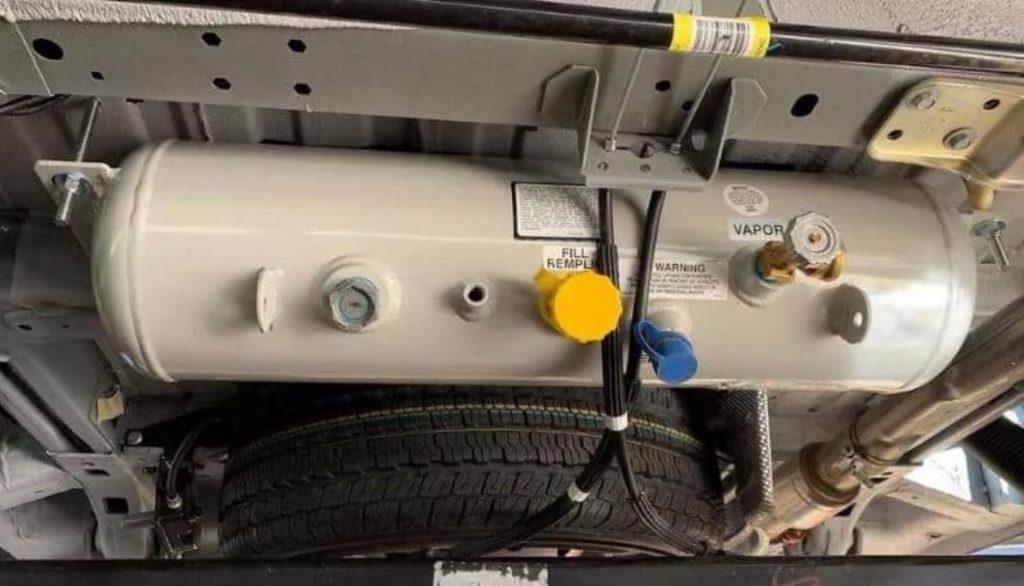
The most frequent causes of leaks and, more importantly, how to fix them are explained below.
An Open Bleeder Valve
Propane tanks often leak after refilling because the bleeder valve is left open. Bleed valves are a specialized form of manually controlled valve used to release pressure from a system by releasing fluids or gases.
Even if the bleeder valve is closed, the coil it employs may still be obstructed by debris. When this happens, the propane in your tank expands, which might cause a leak. Thankfully, there is a simple answer to this issue.
Fix
When a bleeder valve is open, closing it is the only remedy. It’s as simple as plugging the bleed valve. To close the cylinder valve, turn it clockwise. In most cases, a screwdriver is required, and the valve must be turned clockwise to close.
An Open Relief Valve
The relief valve left open is another potential source of leakage after refueling a propane tank. The purpose of the relief valve is to allow excess pressure in the tank to escape.
If the temperature is high enough, gas will expand and occupy a larger volume than it would if the surrounding air were cooler.
So, if the temperature outside is high, the relief valve may release some of the tank’s pressure. Propane will escape from the tank if the relief valve is even slightly open. Furthermore, if the entire valve opens, it might be quite risky due to propane leak in excess quantity.
Fix
A relief valve that has opened presents a very easy problem to fix, but you should avoid doing so. It is intended that this pressure relief valve will open and close automatically.
Tapping or touching the valve, or otherwise trying to control it, may force it to open farther, which is obviously not the desired effect.
In this case, cooling the tank down by spraying it with cold water or immersing it in ice water should do the trick. As the tank’s pressure drops, the valve will automatically close.
If this doesn’t fix the problem, the relief valve may be broken beyond repair, in which case you’ll need to get a new propane tank.
A Faulty Valve System
It’s possible that the valve stem, or the point where you attach the input tube while refueling with propane, is broken or leaking. Propane dripping from the main stem is a major safety hazard since it can spontaneously ignite.
Fix
Replacing the complete tank valve stem system is a more involved remedy to this problem since it prevents additional damage and explosions. To repair the valve system, you will need a pipe wrench, a heat gun, and a replacement valve.
However, you must make sure the propane tank is totally empty before attempting to replace the valve. If you move the valve’s handle clockwise once the tank is completely depleted, it will close. Your next step is to remove the faulty valve. The weld between the gas cylinder and valve has to be warmed using a heat gun so that it may be disassembled.
After this is complete, you may open the tank’s nozzle and let the pressure return to normal by releasing pressure from the regulator. You should have a firm grip on the tank at all times. Then, you’ll remove the valve by turning it counterclockwise with the pipe wrench. You can finally get rid of that antiquated valve.
Once the replacement valve has been installed, check to see that it includes a safety mechanism to prevent overfilling. Using a pipe wrench, secure the valve by threading it into the bung of the cylinder.
How To Drain A Leaking Propane Tank?
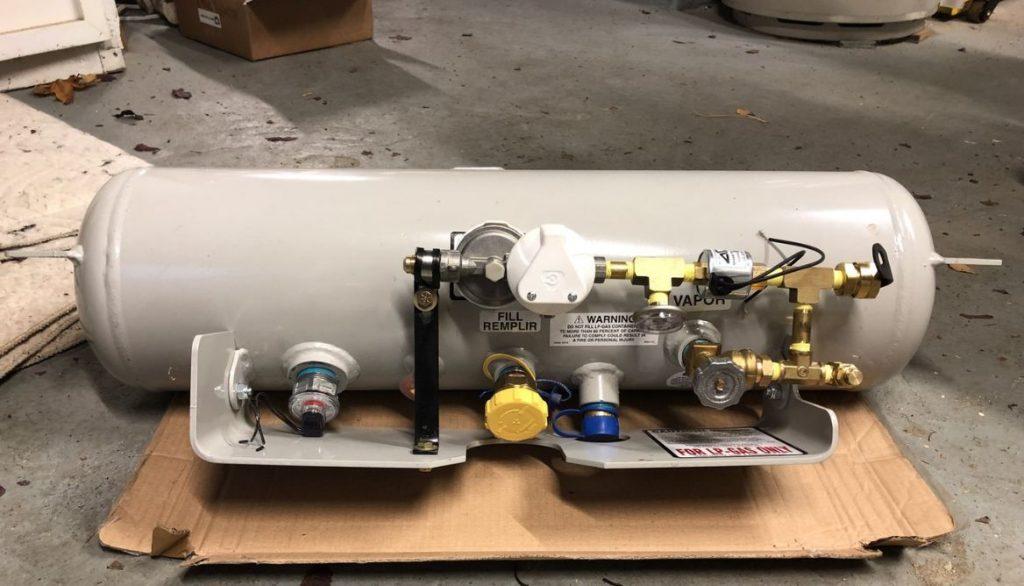
Propane tanks must be emptied before their valve systems can be replaced. A leaky propane tank should be disconnected and moved to an open place to be emptied.
This is something you should obviously never do inside. The propane tank must be tipped on its side. If the tank is not lying on its side, it will not be able to drain it.
To fully open the valve, you must now crank the knob clockwise. The propane should now be able to flow away.
What About Cracked Propane Tanks?
If the leak is caused by a crack or other damage to the propane cylinder itself, the only solution is to replace the tank.
A tank with a crack cannot be fixed. If a propane tank becomes punctured like this, it can never be used again.
Propane Leak Safety
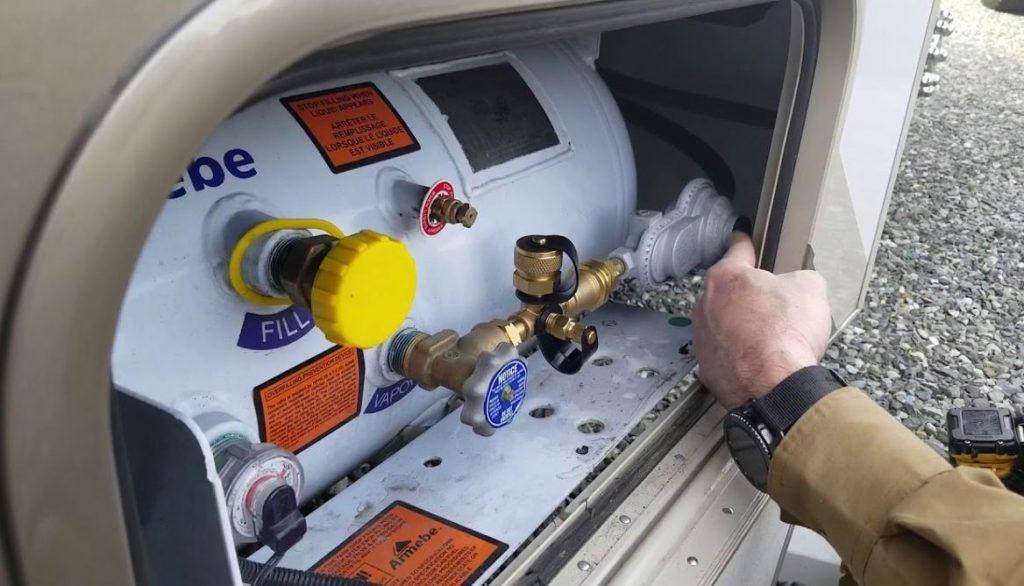
When dealing with propane gas leaks, it is crucial to ensure everyone’s safety. If you smell gas in your house or place of business, you should leave the area immediately and then phone your propane provider from a safe distance.
Below are the 7 safety tips that you need to keep in mind:
Check Propane Tank For Leaks
A foul odor is the most reliable indicator of a propane gas leak. However, certain people, especially the elderly or those taking specific drugs, may have a diminished ability to smell propane. Even while it’s quite unlikely, corrosion inside the tank might be responsible for masking the original factory-applied odor.
Leak testing a gas tank is a breeze. The connection between the propane tank’s cylinder valve and the regulator outlet should be washed down with soapy water or a specific leak-detecting solution. The next step is to release the cylinder’s valve gradually. If there’s a leak, air bubbles will form.
Reduce the Risk of Fire or Explosion
There is always the potential for a fire or explosion to break out in the event of a gas leak. Any open fires should be extinguished after a gas leak has been detected. Do NOT use any electronic devices, including the phone. A single spark is all it would take to set off an explosion.
Shut Off the Main Gas Supply Valve On the Tank
If possible, you can stop further propane gas from entering your home by turning the main gas supply valve clockwise. Get everyone to safety, then contact your propane provider.
Immediately Evacuate the Building or Area
Keep as many windows open as you can when you leave the house. There will be less of a chance of fires or explosions if the trapped gas is allowed to escape. Keep moving, and don’t stop to pack anything. Propane gas makes breathing difficult or impossible.
Call 911
Once everyone is outside of the house and safe, dial 911 or contact your propane provider. Your propane provider and the fire department in your area can respond to propane leaks whenever they are reported.
Stay Away until the Leak is Stopped
You should stay out of the house until the fire crew has contained the leak and given the all-clear signal. Keep away from the want to return inside the house for anything. Prolonged exposure to propane gas through the lungs is fatal.
Schedule Propane Tank Inspection
Arrange a propane tank inspection before you use any of our gas appliances in the residence again. Regular inspections of your propane gas tank may help ensure the safety of your home and family by catching any problems before they become serious.
Will A Propane Tank Leak If Overfilled?
If a propane tank is overfilled, it will leak as intended. High-pressure levels can be produced within a propane tank if it is overfilled.
A propane tank’s pressure relief valve will open if the gas inside the tank rises over a certain threshold. This is to be expected.
Propane Tank Leaking After Refill – FAQ
Why is my propane tank leaking from safety valve?
If a safety or pressure relief valve isn’t completely closed, it will leak. This is especially prevalent in squalor or dusty industrial areas. Debris in the valve might prevent it from sealing completely, leading to leakage.
What causes propane leak?
A propane leak can occur for various causes, including a faulty device, a damaged gas line, or a worn-out connection. Some of these problems might arise from prolonged use or from owning a propane tank.
Why is my new propane tank hissing?
When the tank pressure equals the springs, the safety relief valve releases the pressure. This is when you’ll hear a hissing sound coming from inside the tank.
How do you respond to a propane leak?
If you detect a gas odour inside your home, move to a safe location away from it and call your propane provider immediately. (If the smell is overpowering or you’re hesitant, go outside and make the call).
Conclusion
You can see that there are several potential causes for a propane tank to leak after being refilled. But these are all major problems since propane gas should never be allowed to escape.
Therefore, you should do all in your power to fix the problem immediately. Getting a new tank from a propane supplier is necessary if the old one can’t be mended. It is not worth taking any chances with propane.
Have you ever experienced any propane leaking incidents? If yes, then how you dealt with it? Do share with us your side of the story in the comment section below, we will love to hear about it!

Asen is the owner and main contributor of Camper Life. He is a full-time RV traveler since 2018. He loves camping in nature, fishing, and spending time with his family.
Striving to provide the most valuable information about campers and RVs, he shares everything he learned over the years.
That’s why Camper Life is one of the best sources to find information about RV traveling and living.

